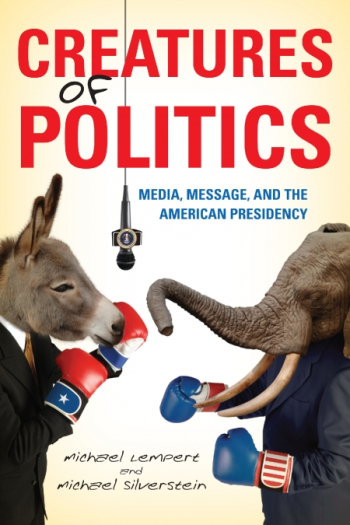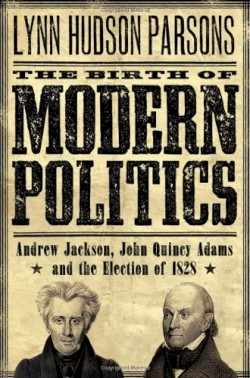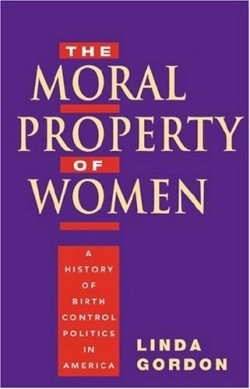#TrumpsReadingList
While the new POTUS may not be the reader our last president was, it’s never too late to learn to love books. To start the next four years off right, we suggest he pick up any of the books reviewed below. For advice, insight, and some interesting parallels, each has something to offer for a newly elected leader looking to expand their reading list and their mind.
Dissecting American Health Care
Commentaries on Health, Policy, and Politics

Douglas B. Kamerow
RTI Press
Unknown
978-1-934831-06-9
Buy: Amazon
It is no easy task to “dissect” American health care, but Douglas Kamerow’s collection of essays does a fine job of it. Kamerow, a physician and former Assistant Surgeon General, has collected forty-seven essays he wrote between 2007 and 2011 on health-related topics. He divides the topics into five broad areas: Assessing and Improving Health Care; Preventive Medicine; Politics, Health, and Health Care; Health Care Reform; and Personal Stories and Ethical Issues.
All of the essays are related to health care, but Kamerow actually covers a broad spectrum of subject matter, which makes for interesting reading. The author addresses issues both common and controversial.
In one essay about retail health clinics, such as the CVS MinuteClinic, Kamerow refers to a national poll suggesting that “patients love them.” While a physician could easily see a retail clinic as competition, Kamerow suggests that instead “they are providing a useful service, from which conventional practitioners could learn a thing or two. In that sense they provide additional impetus for medicine to reinvent itself to become more patient-centered and responsive.” Discussing preventive care, Kamerow writes, “Here’s the dirty little secret: most prevention doesn’t save money, any more than treatment saves money. The question to ask is not whether preventive medicine saves money, but whether your money is buying good value in health.” Kamerow also addresses the free drug samples given to physicians by pharmaceutical sales representatives and admits, “They influence doctors’ prescribing patterns and the types of refills requested by patients.”
As indicated in the excerpts above, Kamerow is not afraid to share his honest opinion. Thankfully, he abandons “physician speak” and instead writes in simple, comprehensible language that is both appealing and engaging. The essays are also very short and easy to read. Admittedly, the author was constrained by format—the pieces were originally written for three-minute National Public Radio commentaries or one-page entries in a medical journal. Brevity serves Kamerow well, and he uses it to full advantage.
Kamerow includes a number of commentaries on governmental health care reform in his collection, though it is unlikely the text will influence opinions on this issue as it is not the main focus of his work. Still, a reader will undoubtedly be better informed about the complexities of health care after reading these essays, and may also feel that he or she has gained rare personal insight from a leading physician.
BARRY SILVERSTEIN (November 14, 2011)
Creatures of Politics
Media, Message, and the American Presidency

Michael Lempert
Michael Silverstein
Indiana University Press
Softcover $25.00 (284pp)
978-0-253-00920-3
In modern American electoral politics, “message” has become a convenient shorthand term for both the narrative a politician tries to convey and the verbal and body language he or she uses to convey it. Whether George H.W. Bush’s famously tone-deaf announcement of “Message: I care” or pundits’ analysis of candidates’ ability to stay “on-message,” this notion of message has become one of the ways politicians are defined by themselves and others.
In Creatures of Politics, anthropology professors Michael Lempert and Michael Silverstein analyze a series of examples of how “message” has manifested in presidential campaigns. The book is a collection that includes sections of essays and presentations the authors previously completed. So while the chapters all cover message in some way, they don’t all come together as effectively as they could, making the overall book not quite the sum of its parts. Still, those parts are worth reading and include some interesting analysis.
The first chapter focuses on the ways the 2008 campaigns tried to brand themselves and their opponents. The authors consider the ways John McCain’s campaign reused negative messaging about Barack Obama from the Hillary Clinton campaign, how McCain used his reputation for “straight talk” to his advantage during the Republican primaries, and how the choice of Sarah Palin for vice president played into existing messaging about the campaign (“maverick” to its supporters, “impulsive” to its detractors).
Other sections examine how candidates use “the issues” to define each other, and how imprecise language has allowed candidates’ opponents to misleadingly define the positions they hold. Lempert and Silverstein look at how “gaffes” and “bloopers” are covered by the national press, and how campaigns are sometimes branded by these missteps. For a chapter on how candidates fight allegations of “flip-flopping,” the authors look at the 2004 election and how Karl Rove and the Bush campaign used advertising to portray John Kerry as a “flip flopper” as well as how Kerry used specific language in the presidential debates to parry that charge.
While not as connected to the same kind of subject matter, the last two chapters are among the most interesting in the book. One examines candidates’ hand gestures, including how Barack Obama and John McCain use these motions when making specific kinds of arguments, and how that body language comes across on television. The other looks at an incident in which sloppy messaging by Richard Nixon—making offhand comments to a reporter that came across as sexist— became part of the story and drew focus from the bill signing for which he’d hoped to gain coverage. All these sections cover different aspects of messaging with interesting discussions, and provide new ways of thinking about campaign coverage.
JEFF FLEISCHER (October 19, 2012)
The Birth of Modern Politics
Andrew Jackson, John Quincy Adams and the Election of 1828

Lynn Hudson Parsons
Oxford University Press
Unknown $24.95 (272pp)
978-0-19-531287-4
Buy: Amazon
For better or for worse, the 1828 presidential election remains the model for all campaigns that followed. The election pitted incumbent John Quincy Adams against Andrew Jackson, whose followers claimed he was denied the presidency in 1824. During that election, Adams was said to have struck a “corrupt bargain” with Henry Clay, by promising to appoint him Secretary of State in return for Clays support. Jacksons supporters were determined that the “hero of New Orleans” would not be denied in 1828. The result was a bitterly fought election that featured such modern contrivances as carefully orchestrated newspaper attacks, fundraising, opinion polls, dirty tricks, and the growing recognition that elections could not be won without political parties to do the grunt work.
The author of this engaging and accessible account is history professor emeritus at SUNY College of Brockport. He previously wrote John Quincy Adams and the co-edited The Home-Front War: World War II and American Society. The Birth of Modern Politics describes much more than the 1828 election; it discusses the characters and events of early nineteenth-century politics that set the stage for the presidential fight. Adams promoted a wide-ranging program of internal improvements that required taxation and a strong federal government. Jackson appealed to the majority of voters who remained suspicious of a British-like controlling government and believed a presidential administration had only the authority to protect individual liberties. Eventually, these different interpretations became the foundations for the Republican and Democratic parties for the rest of the nineteenth century.
The Jacksonians were more adept at playing the new politics of 1828: they portrayed Jackson as a man of the people and accused Adams of being an elitist New Englander, a charge that Adams did little to refute. Jackson trounced Adams in the electoral vote, 178 to 83, although the popular vote was somewhat closer, 56 percent to 44 percent. Following the election, John Quincy Adams was elected to the House of Representatives, where he remained until his death in 1848. He led the bloc that opposed slavery extension in the West. Jackson, “Old Hickory,” died in 1845. Unlike John Adams and Thomas Jefferson, two political enemies who became friends during their later years, John Quincy Adams and Andrew Jackson never reconciled: the politics of the 1828 election prevented it.
This worthy addition to the excellent Pivotal Moments in American History series will appeal to general readers in public libraries and to historians who might want to consider it for courses.
KARL HELICHER (April 14, 2009)
Immigration
How to Avoid Its Perils and Make It Work

Bruce D. Thatcher
CreateSpace
Softcover $19.99 (464pp)
978-1-4783-7905-8
Buy: Local Bookstore (Bookshop), Amazon
Immigration is a hot-button political topic for many Americans. What most people forget is that the heated debate over immigration is almost as old as the United States itself. What is more important to understand is that nearly all countries in the world have similar debates about immigration; history has shown that well-thought-out policies can be a positive, strengthening force for a country while poor, weak ones can be destabilizing.
For historian Bruce D. Thatcher, these moments in history are teachable ones for modern policymakers, politicos, or just about anyone who feels like wading into the debate. That’s what makes Immigration: How to Avoid Its Perils and Make It Work an extremely interesting and powerful work.
Thatcher begins his book by defining several important factors to consider when writing immigration policy. He believes immigration must serve the well-defined, long-term interests of a nation, immigration must be controlled to enhance national interest, and immigrants must be willing to become part of the host country’s culture.
Thatcher then uses examples from several countries to create case studies. He begins by looking at US policies established between 1788 and 1920 and how those shaped the mythos of the melting pot. He also shows readers how Mexico’s immigration policies eventually led to a civil war (which ended with the secession of Texas), how Australia’s strict immigration laws kept the country 98 percent “white” until the 1970s, how immigration in Palestine led to war and resulted in the indigenous population’s loss of their land, how colonialism and religion still influence France’s immigration policies today, and more. Each study provides an executive summary, a look at the specific laws enacted, a commentary on and analysis of the case (with questions to consider), and recommendations for further reading.
All of this makes Immigration a surprisingly compelling read. Thatcher keeps his histories short and concise, and at any point in the book, readers can either flip to the executive summary of a case to read a snapshot of the issue or go to the analysis section to further examine specific laws and figures.
Thatcher also succeeds by providing facts in a logical prose. There’s no room for politics because every sentence is shaved to its factual core and often footnoted. The author implores his readers to “resist the urge to make moral judgments, however justified” because “applying moral values will tend to cloud the lessons to be learned.”
Immigration is the second book in the History Speaks Today series, a project designed to help non-historians make decisions based on the past. Immigration would be a reasonable guide for a senator on Capitol Hill just as easily as it could become a well-thumbed reference for a political science student.
KATERIE PRIOR (January 14, 2013)
The Moral Property of Women
A History of Birth Control Politics in America

Linda Gordon
University of Illinois Press
Unknown $34.95 (464pp)
978-0-252-02764-2
Buy: Amazon
In the first years of the last century, a physician writing about reproduction lamented, “By that damnable sin-the avoidance of offspring-our women are no longer compelled to stay at home. Now woman has weaned herself from the hearthstone, and her chief end is self. Pray!” That physician was a proponent of a controversial theory, dominant from 1905 to 1910, which claimed that the unchecked birthrate of undesirable citizens, and fewer births of “quality” people, threatened race suicide. President Theodore Roosevelt even promoted the belief, calling women who elected to go childless selfish and self-indulgent, not fulfilling their “reproductive obligation.”
In this revised and updated version of a comprehensive history first compiled twenty-six years ago, the author traces birth control and the often controversial politics swirling around it during the past 200 years. The title comes from a phrase that the author heard used by the French prime minister of health nearly fifteen years ago, when he ruled that RU-486, also known as the abortion drug, could be placed on the market there. He called it “the moral property of women.” (Gordon’s 1976 version was titled Woman’s Body, Woman’s Right.)
Gordon begins with a prehistory of birth control-describing how Jewish women on the Lower East Side of New York City one hundred years ago tried to abort themselves by sitting over a pot of steam from stewed onions-and moves on through Victorian prudery and its reaction, the 1870s voluntary motherhood ideology, which had its roots in the early women’s rights movement. It’s sometimes difficult to follow the players-suffragists, moral reformers, free-love members, eugenists, socialists, sex radicals, the medical community-without a scorecard, but Gordon does a good job of pulling up blood-and-flesh examples of each. Ezra Heywood, for example, a free-love patriarch, endorsed male continence, a form of abstinence.
The social history moves chronologically; a large section is devoted to Margaret Sanger and the background of what was to become Planned Parenthood. Gordon, a professor of history at New York University, and author of The Great Arizona Orphan Abduction, which received the Bancroft Prize in 1989, has extensively researched her subject, so she is often able to throw out hard-to-believe information; for example, during the Depression, one enthusiastic soul proposed by law to limit families to two children.
ROBIN FARRELL EDMUNDS (December 16, 2002)
Hannah Hohman
